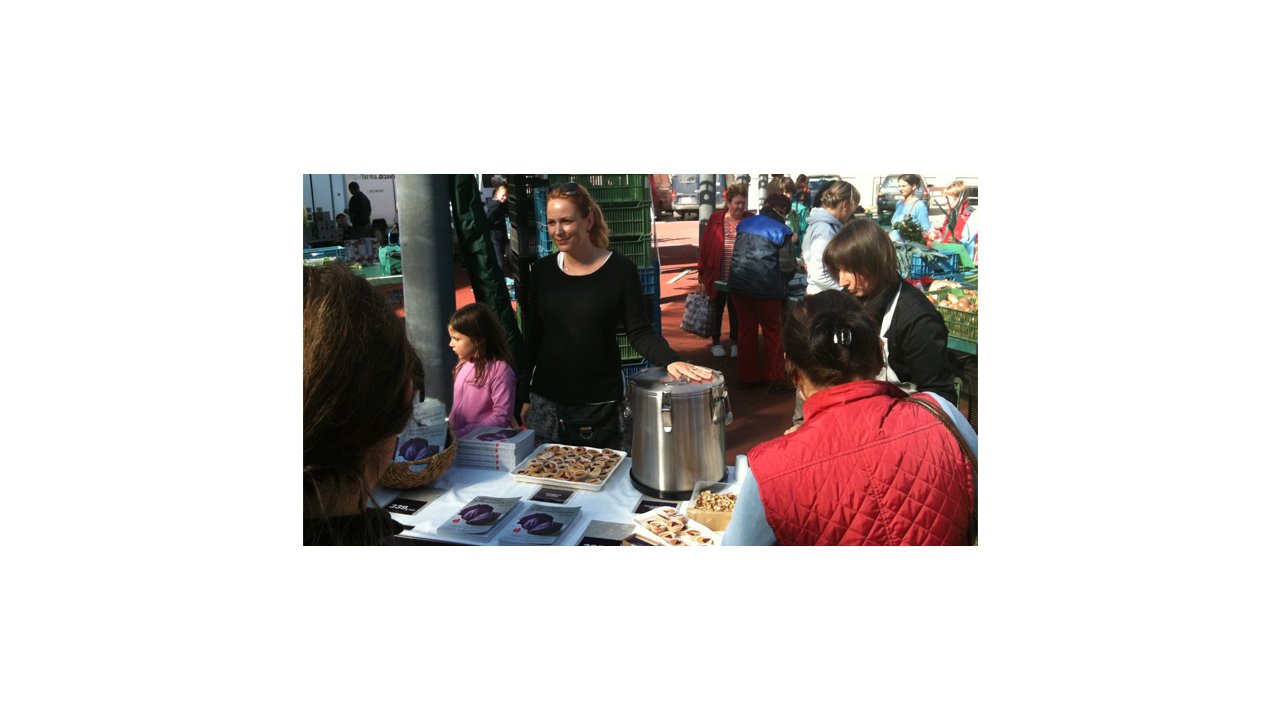The author of two cookbooks, and the founder and first editor-in-chief of Apetit magazine, Hana Michopulu knows food. Read on to find out her views on the ubiquitous Czech dumpling, tips on the Prague foodie scene, tasty spring recipes, and more.
Where does your passion for food come from?
From my family and childhood. We had a garden and planted our own vegetables and my mother passed on to me her strongly purist way of cooking. If the schnitzel is to be covered just in breadcrumbs, we shouldn’t add seasonings or cornflakes, but only the best breadcrumbs we can get. She always tries to get the simplest and strongest taste from food, and that’s what great chefs do today! I have always liked good food and was really happy when I discovered it could be a serious job.
What was the first recipe you learned how to make?
An egg pomazánka (spread), which has hardboiled eggs, mayo, mustard and onion; and bábovka, a traditional cake baked in a crown-shaped pan. These were the first recipes in my cookery notebook, which I had established by the time I was twelve years old.
PARTNER ARTICLE
What is your favorite international cuisine, and why?
I love Southeast Asian tastes, and it smells so nice! Also, French, of course—it’s the basis of cuisine for me.
Do you always cook at home, or does your husband know how to cook, too?
In the beginning of our relationship, he cooked nice meals for me, but then I took over the kitchen and he resigned. Sometimes I regret this.
You were behind the movement for reestablishing farmer’s markets in Prague. What was your inspiration for this and what was the biggest hurdle you had to overcome?
My inspiration came from travelling through Europe. I knew farmer’s markets from Paris, London, and the south of France, and I just wanted the same fresh, local ingredients for cooking. First of all, I tried to influence the public as a journalist—with articles for newspapers and magazines—but it led nowhere. I realized that if I wanted a farmer’s market, I had to do it myself, and so I did. The hardest part was persuading the people in the town hall that it is not a big business they can earn money on, but a service for the people living in their area, and that it couldn’t exist without their support.
How has Czech cuisine changed over the last twenty years, and where do you see it going?
Well, it’s moving forward, slowly but surely, and that’s important. Now, we are getting back to our roots, rediscovering how to cook properly, a skill which was destroyed by the communist so-called “hospitality.” This last period has also brought us a worse quality of ingredients, in the name of price, but a wider range to choose from. The next step will be to modernize the base of our traditional cuisine, because we can’t keep eating the same heavy meals with such huge portions of side dishes. And that’s why I am delighted that La Degustation got a Michelin star, because they are doing exactly what we have to do with Czech cuisine: getting back to the roots and modernizing. Some people think the change is happening too slowly, and voice their pessimistic views in the Czech media, but I think it’s great that it’s happening and it’s exciting to be involved. I believe it’s a process we have to go through.
In light of recent news, what do you think about the food quality in Czech supermarkets?
I think they sell terrible quality food, and I do as little of my shopping as possible there. Thank god we have a very good, small food shop near my place.
What is the difference between housky and rohlíky?
Rohlíky and housky are made out of the same white bread dough; it’s just the shape that’s different. By the way, did you know that even though housky and rohlíky are made from the same dough, we consume way more rohlíky? I don’t know why, perhaps we prefer the shape of rohlík because we can hold it more comfortably in our hands.
What constitutes a truly Czech meal?
There are just a few of them. We were always part of German or Austrian territory, and so was our food; we shared it with our neighbors. What’s really typically Czech (even Austrians admit that they took it from us) is the sweet part of Viennese cuisine: palačinky (pancakes), koláče (cakes), buchty (filled doughnuts), lívance (pancake dough with yeast) and so on. Czech maids and cooks who went to work in Vienna brought Czech recipes with them, and they became famous there. Apart from that, we have a couple of regional dishes, such as kuba, mushrooms with barley; or krkonošské kyselo, soup made of bread leaven from the Krkonoše mountains. For me, Czech plum or apricot koláč, and regional cakes like frgále with povidla, marmalade from baked pears or plums, are some of my favorite Czech desserts.
What is your opinion about the Czech dumpling? Is it the symbol of Czech cuisine? Should it be?
I know what you mean, is it heaven or hell? I’ve just done a survey about this for Apetit magazine. Well, in my opinion, it’s our heritage, and we have to preserve it. Moreover, most cuisines have their own vehicle for eating wheat; the only trouble with ours, the dumpling, is the portion size and that we don’t combine it with veggies. To be honest, that’s why I prefer Italian pasta. The dumpling can’t survive like this, and as I said, we have to go back to our roots and modernize.
Looking back at Easter earlier in the year, what exactly is the Czech dish nádivka and how did it become associated with this holiday?
I suppose that the recipe was thanks to the fact that the hens suddenly lay more eggs in spring, and households had to use them somehow. It’s white bread soaked in milk, mixed with eggs, some greens or smoked pork, or both, and a lot of nutmeg, then baked. I add nettles, no pork, and bake it in muffin forms. Basically we can liken it to Yorkshire pudding, or a savory bread pudding.
Where would you recommend our readers go for a traditional Czech meal?
Definitely Lokál, it’s really very close to how we cook at home, and it’s far different from the horrible meals served for tourists. And La Degustation – it’s not the cheapest restaurant, but it’s worth the money.
What resources would you recommend for those that wish to get started with cooking Czech dishes?
I would take a course at the Prague Culinary Institute. They have also put together a cookbook which is very authentic. It’s one of the best Czech cuisine cookbooks currently published, if not the best ever.
Do you have any hot tips you could share about restaurants, shops or products available in Prague?
I like Paul Day’s butchery on Náplavní street, Prague 2—his British double mint sausages are amazing. I’m curious about the new bistro Kido, in Letná, Prague 7. It looks really appealing.
Any tips for good spring recipes?
Eat nettles! Make an infusion from them, eat them like spinach, put them on toast with cheese like rarebit, or mix them into a bowl of spaghetti and parmesan cheese.
What’s next for you?
Well, the farmer’s markets taught me that it’s much better to do things, than to talk and write about them. So now I’m trying to run a small family business. I cook fresh packed soups, and I would like to deliver them to busy office workers. Now, I’m looking for a company that would like to order them from me.
Related articles












 Reading time: 6 minutes
Reading time: 6 minutes 






























